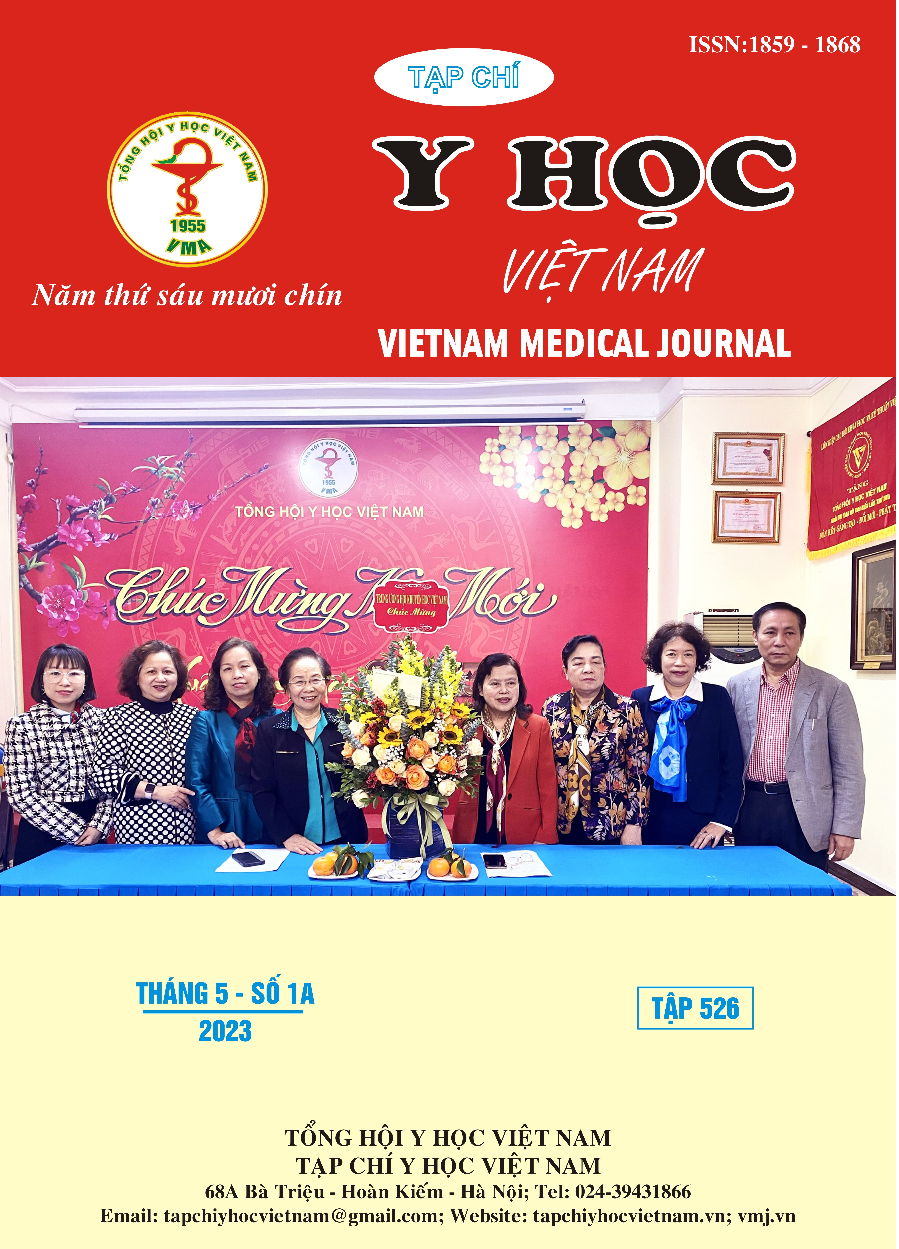HUMAN PARVOVIRUS B19 INFECTION RATE AND RELATIONSHIP TO EPIDEMIOLOGICAL AND SUBCLINICAL FEATURES IN PATIENTS WITH RHEUMATOID ARTHRITIS
Main Article Content
Abstract
Objectives: To evaluate the prevalence of Human Parvovirus B19 virus infection in relation to epidemiological characteristics and some main subclinical manifestations in rheumatoid arthritis patients. Subjects and methods: 115 patients with rheumatoid arthritis were collected peripheral blood samples were, separated plasma, detected B19_IgG, and B19-IgM antibodies by ELISA method, the calculated infection rate was and compared the difference epidemiological characteristics and some main clinical manifestations between negative and positive with antibodies to the Parvovirus B19 virus groups. Results: The rate of B19_IgG positivity was 42.6%, B19_IgM was 2.6%; the positive rate was 69.4% for females, 30.6% for males; The highest positive rate was in the age group 60-69 years old (36.7%). Conclusion: The rate of Parvovirus B19 virus infection in rheumatoid arthritis patients was higher than the control group (42.6% vs 26.7%, p = 0.018). The prevalence of this infection is higher in the group of female rheumatoid arthritis patients. Parvovirus B19 infection may play a role in the pathogenesis of rheumatoid arthritis.
Article Details
Keywords
Parvovirus B19 virus; Rheumatoid arthritis; Relationship
References
2. Firestein G.S. (2001). Etiology and pathogenesis of rheumatoid arthritis. Textbook of rheumatology. 1:851-897.
3. Nishioka K. (1989). Chronic inflammatory arthropathy associated with HTLV-I. Lancet. 1:441.
4. Woolf A.D., Campion G.V., Chishick A., et al. (1989). Clinical manifestations of human parvovirus B19 in adults. Archives of internal medicine. 149(5):1153-1156.
5. Reid D., Brown T., Reid T., et al. (1985). Human parvovirus-associated arthritis: a clinical and laboratory description. The Lancet. 325(8426):422-425.
6. Potter C., Potter A., Hatton C., et al. (1987). Variation of erythroid and myeloid precursors in the marrow and peripheral blood of volunteer subjects infected with human parvovirus (B19). The Journal of clinical investigation. 79(5):1486-1492.
7. Heegaard E.D., Brown K.E. (2002). Human parvovirus B19. Clinical microbiology reviews. 15 (3):485-505.
8. Takahashi Y., Murai C., Shibata S., et al. (1998). Human parvovirus B19 as a causative agent for rheumatoid arthritis. Proceedings of the National Academy of Sciences. 95(14):8227-8232.
9. Ishii K.K., Takahashi Y., Kaku M., et al. (1999). Role of human parvovirus B19 in the pathogenesis of rheumatoid arthritis. Japanese journal of infectious diseases. 52(5):201-207.
10. Peterlana D., Puccetti A., Beri R., et al. (2003). The presence of parvovirus B19 VP and NS1 genes in the synovium is not correlated with rheumatoid arthritis. The Journal of rheumatology. 30(9):1907-1910.


